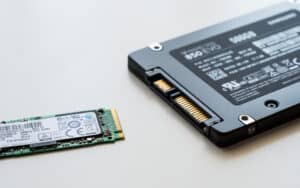
Everything from smartphones and tablets to laptops, desktops, and servers now contain multi-core processors. And it’s always believed that the more processor cores you have, the better the performance. Everyone believes it religiously — but it’s just not always true.
Windows will take advantage of all the processing power available to it automatically. Therefore, “all” cores are not required to be enabled. However, there are some System Configuration settings that you can change.
Even if you have a dual, quad, six-core processor, you are not guaranteed that all of them are always turned on. It is up to your operating system to decide which of your cores are activated at any given time.
But, if you still like playing around with your computing hardware and want to manually enable all cores, here’s what you need to do.
Steps To Enable Multiple CPU Cores
Here’s how to enable multiple CPU cores.
Step #1: Open System Configuration
System configuration is a settings pane offered by Microsoft Windows that allows users to configure the Windows environment. You can either search for “System Configuration” in the Windows search bar or type msconfig in “Run” to open it.
Step #2: Head Over to Advanced Options
When in System Configuration, click on the “Boot” tab and select “Advanced options” from there. You will be taken to the advanced options, where you can adjust the number of cores.
Step #3: Adjust the Number of Cores
Select how many cores you want to enable from the dropdown menu in the advanced settings window by checking the box next to the number of processors.
Step #4: Save the Settings and Reboot
Once you’ve chosen the number of cores you’d like to enable, save the changes, and the PC will be prompted to restart.
Finding Out How Many Cores Your Processor Has
Whether you’re into gaming, heavy audio, or video editing, knowing how many cores your processor holds can be very helpful. Having an idea of it can be handy when troubleshooting or just to see how powerful your CPU is.
If you’re unsure of how many cores your computer has, follow these easy steps to find out:
Step #1: Launch Task Manager
Either right-click on your taskbar to open the Task Manager or use the keyboard shortcut Ctrl + Shift + Esc to launch it.
Step #2: Head Over to the Performance Tab
You can find your CPU’s Core and Logical processor count in the performance tab. The Core number refers to the number of physical cores your processor has, while logical processors indicate the number of logical cores your processor has.
Additionally, the task manager displays the performance of each CPU core. This way, you can work out whether enabling all CPU cores is worth the trouble or not.
Is It a Good Idea To Enable All Cores?
Just because you can enable all the cores on your CPU doesn’t mean you should. Your operating system and the running programs will use as many cores and processing power as they need.
Multi-core processors have more cores, meaning more power and improved processing speed, which is particularly useful when running software that can use several cores.
However, there’s no need to enable all of the cores on your CPU unless you are doing some kind of extreme computing or rendering that needs that many resources.
You may encounter compatibility issues with some of your programs manually enabling all the cores. It is only recommended if you know what you are doing and are well aware of all the risks.
How Many CPU Cores Do I Need?
The theory goes that the more cores you have, the more instructions you can process at once, which will lead to superior performance when multitasking. But, do you need those extra cores all the time?
For office work, such as word processing, spreadsheets, emails, accounting software, and perhaps some time watching Netflix or YouTube, a dual-core CPU with 2 cores is enough.
Things change a little when it comes to gaming, though. Most modern game titles now require powerful processors, so to achieve a smooth, high frame rate gaming experience, you’d need a powerful 4 or 6-core processor.
Likewise, if you want to use your CPU for graphics design, video editing, audio production, 3D rendering, or animation, then an 8-core or more CPU is preferable.
Frequently Asked Questions
Processors with multiple cores being enabled offer greater speed, efficient multi-tasking, and faster response times than processors with single or dual cores and enhance your PC’s overall computing performance. Other factors, such as clock speed, etc. also contribute.
Using task manager, you can boost the CPU priority of a program or game, increasing that program’s performance. Task Manager gives you control over your CPU and helps the productivity of a program or game.
With Windows 10, you can maximize your processor state using the power options in the Control Panel. You can set the Minimum processor state to 100%, under Hardware and Sound, then Power Options, to cover high-demand usage needs.
Although the number of cores in your CPU may not solely affect your gaming experience, it can certainly make a difference. Ideally, you should have around 4 or 6 cores on your gaming PC for a smooth gaming experience, but an 8-core CPU will maximize your performance.
Your PC would have a CPU usage of around 2-5% at idle, increasing up to 70% or even 100% under a heavy workload. In contrast, if your CPU usage is low even during intensive work sessions, this could be caused by driver issues, bottlenecks, or even hardware problems.








